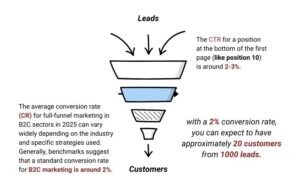In today’s digital age, having a robust online presence is not just an advantage; it’s a necessity. For businesses, bloggers, and content creators, mastering Search Engine Optimization (SEO) can mean the difference between being lost in the vast digital ocean and standing front and center for potential customers and readers. SEO course, in this comprehensive guide, “Mastering SEO: Unleash the Power of Search Engines,” we will explore the key strategies and understanding needed to elevate your SEO game.
Chapter 1: Understanding the Basics of SEO course
## What is SEO?
Search Engine Optimization, commonly known as SEO, is a multifaceted approach aimed at enhancing a website’s presence and performance in search engine results. It’s a vital aspect of digital marketing that involves a mixture of technical proficiency, content creation, and strategic planning to ensure that a site appeals to search engines like Google, Bing, or Yahoo. At its core, SEO is about understanding what people are searching for online, the answers they seek, the words they’re using, and the type of content they wish to consume.

The process of SEO can be divided into several main categories:
1. Keyword Research: This is the foundational step in any SEO strategy. It involves identifying the words and phrases that potential visitors are using to find information related to your industry or business. By understanding these keywords, you can tailor your content to align with what users are actually searching for.
2. On-Page SEO: This aspect focuses on optimizing individual web pages to rank higher and earn more relevant traffic in search engines. It involves optimizing elements like meta tags, headers, content quality, and URL structure. Additionally, it ensures that the website is user-friendly and that the content is aligned with the search intent.
3. Technical SEO: This involves the behind-the-scenes actions taken to help search engines crawl and index your site more effectively. It includes optimizing site speed, ensuring mobile-friendliness, XML sitemap creation, and fixing crawl errors, SEO course among other tasks.
4. Off-Page SEO: This refers to actions taken outside your own website to impact your rankings within search engine results pages (SERPs). This is largely achieved through building backlinks, which are essentially endorsements from other reputable sites that signal to search engines that your content is valuable and credible.
5. Content Creation: Content is the backbone of SEO. Regularly publishing high-quality, engaging, and informative content can attract and retain visitors. Content should be tailored to address the needs and questions of your audience while incorporating relevant keywords naturally.
6. User Experience (UX): A positive user experience is essential for SEO. Search engines reward sites that provide a good user experience with higher rankings. Factors such as page load speed, mobile optimization, and an intuitive navigation structure contribute to a positive UX.
## Why is SEO Important?
In today’s digital age, SEO is more important than ever. Here’s why:
1. Increased Visibility and Traffic: SEO is fundamentally about improving the ranking of your website in search engine results. Higher rankings increase the visibility of your brand and attract more organic (non-paid) traffic. Given that the majority of online experiences start with a search engine, ranking on the first page of search results is critical for getting noticed.
2. Credibility and Trust: Users tend to trust websites that appear higher in search results. A strong presence suggests authority and reliability to users, which can enhance your brand’s credibility. SEO can help establish your brand as an expert in your industry, fostering trust among potential customers.
3. Better Return on Investment (ROI): Compared to traditional advertising methods, SEO is cost-effective. While it requires an initial investment, the long-term benefits of increased traffic and brand recognition often lead to a better ROI. SEO targets users who are actively searching for your products or services, making it more efficient than outbound strategies.
4. Understanding Customer Behavior: Through the analytics tools associated with SEO, businesses can gain insights into customer behavior, preferences, and trends. This information is invaluable for refining marketing strategies and improving product offerings to meet customer needs better.
5. Competitive Advantage: In a competitive market, having a robust SEO strategy can give you an edge over competitors who may not be optimizing their online presence. Staying ahead in search rankings can mean the difference between being a leader in your industry and being lost among the competition.
6. Adaptability and Growth: SEO is not static; it evolves with changes in technology and consumer behavior. It helps businesses adapt by consistently aligning their online presence with current search trends and user expectations.
In conclusion, SEO is an integral part of any digital marketing strategy. By investing time and resources into SEO, businesses can enhance their online visibility, build their brand credibility, and ultimately drive growth and success in the digital marketplace.
Chapter 2: Keyword Research and Optimization – SEO course
## The Power of Keywords
Keywords are the essential building blocks of search engine optimization. They are the phrases and terms that users input into search engines when seeking information, products, or services. Understanding the power of keywords is crucial for crafting a successful SEO strategy and ensuring that your content reaches the right audience.
Keywords effectively bridge the gap between what people are searching for and the content you are providing to meet those needs. By strategically identifying and utilizing the right keywords, you can make your content more visible and accessible, drawing in more organic traffic and engaging potential customers.

### Identifying the Right Keywords
The first step in harnessing the power of keywords is identification. This involves conducting thorough keyword research to understand what your target audience is searching for. Tools like Google Keyword Planner and SEMrush are invaluable resources that assist in discovering relevant keywords for your niche. These tools offer insights into search volume, competition levels, and even related keyword suggestions.
By analyzing these metrics, you can prioritize keywords that have a high search volume but low competition, allowing you to target terms that can provide the most significant potential for traffic and conversion. Understanding the intent behind keywords—whether informational, navigational, or transactional—is also crucial, as this helps tailor your content to meet the user’s needs.
### Implementing Keywords
Once you’ve identified your target keywords, the next crucial step is integrating them into your content naturally and strategically. Keyword implementation should enhance, not detract from, the quality and readability of your content. SEO course, Here’s how to do it effectively:
1. Title and Meta Description: The title is one of the first things both users and search engines notice. Including your primary keyword in the title and meta description can significantly enhance visibility and click-through rates.
2. Headers and Subheaders: Use keywords in headers (like H1, H2, H3 tags) to break down your content into digestible sections. This not only improves readability but also signals to search engines about the relevance and structure of your content.
3. Content Body: Integrate keywords throughout the content in a way that feels natural. Focus on creating informative and engaging content where keywords appear organically. Aim for a balance where the content reads well while still adhering to keyword strategies.
4. Avoiding Keyword Stuffing: It’s important to avoid keyword stuffing, the practice of overloading a webpage with keywords to manipulate rankings. Search engines have become highly sophisticated and can penalize pages that engage in this practice.
5. Use of Long-tail Keywords: In addition to primary keywords, incorporating long-tail keywords, which are longer and more specific keyword phrases, can help capture targeted traffic and often face less competition.
In conclusion, effectively leveraging the power of keywords requires a strategic approach that begins with thorough research and ends with thoughtful implementation. By doing so, you create content that not only ranks well in search engines but also resonates with and serves the needs of your audience, driving traffic, engagement, and ultimately, success.
More post:
Refferral:
Chapter 3: On-Page SEO Techniques – SEO course
## Content is King
The phrase “Content is King” has become a guiding principle in the digital marketing world, emphasizing the pivotal role that quality content plays in SEO and online success. In the ever-evolving landscape of search engine optimization, content remains the cornerstone that supports all other efforts. It’s not just about filling up pages with words; it’s about providing meaningful, valuable, and engaging information that serves the needs of your audience.
### Quality and Originality
The foundation of effective SEO is built on quality and originality. Search engines prioritize content that is well-researched, informative, and tailored to meet user needs. Original content that offers unique insights or solutions to problems stands out in a crowded digital environment. This means creating content that is not only free from plagiarism but also filled with fresh perspectives.
High-quality content often involves thorough research, expert opinions, data-backed arguments, and clear, concise writing. It should be accessible to the intended audience in terms of reading level and relevance, ensuring that it answers the questions users have and solves the problems they face. By doing so, your content not only attracts visitors but encourages them to stay longer and explore further, which are signals search engines use to gauge the value of your content.
### Engagement and Updates
Engagement is another critical aspect of content creation. Engaging content captures the reader’s interest and encourages interaction through comments, shares, and likes. Visual elements like images, videos, and infographics can enhance engagement by breaking up text and making information more digestible and appealing. SEO course
Moreover, regularly updating your content is essential for maintaining and improving search rankings. Fresh content signals to search engines that your website is active and relevant. Regular updates can involve adding new insights, updating statistics, or expanding on points to provide even more value to readers. This continual refinement keeps your content relevant in the fast-changing digital world and helps maintain its search engine performance.

### Meta Tags and Descriptions
Meta tags and descriptions, while not visible on the webpage, play a crucial role in SEO. They help search engines understand the context and content of a page, influencing how it appears in search results. The meta description, in particular, serves as a mini-advertisement for your content. It’s the snippet of information beneath the page title in search results that informs users what the page is about.
Crafting compelling meta descriptions involves summarizing the core message of your page in a concise, enticing manner, usually within 150-160 characters. Including your primary keyword within this description not only aids SEO but can also attract the attention of searchers, improving click-through rates. It should provide a clear and compelling reason for users to click on your link over others.
In conclusion, while various SEO techniques contribute to a site’s search performance, the quality and effectiveness of your content remains paramount. By focusing on creating, updating, and optimizing content with engaging, valuable information—and supporting it with well-structured meta tags—you establish a strong foundation for digital success, ensuring your content truly reigns supreme in the online world.
Conclusion: Embrace the Journey
Mastering SEO is not a one-time effort but a continuous journey. By understanding the intricacies of how search engines work and dedicating time to implementing these strategies, you can unleash the full power of search engines. Whether you’re a small business owner, a marketer, or a content creator, effective SEO practices can propel you to new heights in the digital realm. SEO course, Remember, the essence of SEO lies in delivering value and serving your audience’s needs. As you embark on this journey, focus on providing the best possible user experience, and the search engines will reward you. Start today, and watch as your online presence transforms, bringing increased visibility and success.

